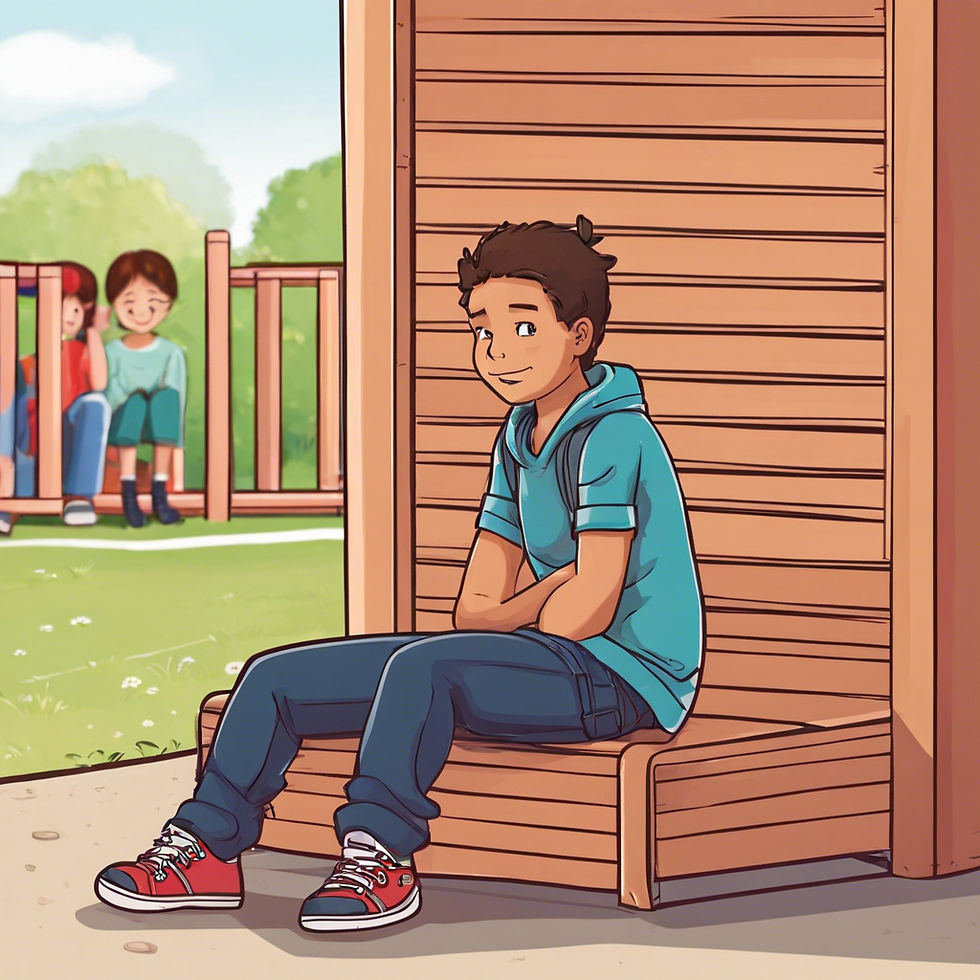Why Recess Time-Out Doesn’t Work—and What to Do Instead
- Peace Love Education

- Jul 19, 2024
- 4 min read

In schools, educators often rely on strategies to address poor behavior or missed homework. One common approach is using recess time-out as a consequence. But does it really work? Let’s explore this practice more closely.
The Reality of Recess Time-Out
We’ve all seen it: students trickling out to recess a minute or two after their classmates, slowly making their way to a bench or a lunch table with a book or a slip of paper in hand. They might stop for a drink of water or a bathroom break, dragging out the inevitable moment they have to sit in time-out. These students are often passively supervised, sometimes by a teacher’s aide or another teacher, but rarely by their own.
The question we need to ask is: Does this consequence change their behavior? Do they consistently bring their homework after missing recess or improve their behavior because they had to sit out while others played? The answer, more often than not, is no.
Research supports this observation. A study by the American Academy of Pediatrics found that withholding recess as a disciplinary measure is counterproductive and negatively impacts student behavior and academic performance (Ramstetter et al., 2010). Additionally, students who are frequently removed from recess for time-out often develop a negative self-image, associating themselves with habitual misbehavior, which only perpetuates the cycle (Jarrett, 2013).
Why It Doesn’t Work
Recess time-out is convenient for teachers—it doesn’t interrupt class time, and it’s easy to implement. But for many students, missing recess just isn’t a significant enough consequence. It doesn’t hit home, and it certainly doesn’t inspire them to change their behavior. Over time, students who frequently end up in recess time-out begin to see it as part of their identity. They think, “This is just who I am. I’m the kid who’s always in trouble.” This mindset can be detrimental, reinforcing negative behavior rather than correcting it.
The Same Faces, the Same Result
If you take a close look, it’s usually the same students in recess time-out week after week. They know who else will be there because it’s the same crew. This repetition without improvement is a clear sign that the consequence isn’t effective. When students start to see themselves as part of this group, it can lead to a self-fulfilling prophecy—continuing to behave poorly because that’s what they believe is expected of them.
Data from the National Association of School Psychologists (NASP) reveals that repetitive and punitive disciplinary actions, like recess time-out, are less effective in changing behavior and can lead to increased behavioral issues over time (NASP, 2014). Moreover, students who are repeatedly subjected to such measures are more likely to disengage from school, leading to a decline in academic performance and an increase in absenteeism (Losen & Gillespie, 2012).
A Better Approach: Direct Supervision
So, what’s the solution? How can we use time-out in a way that truly impacts behavior? The answer lies in direct supervision.
Yes, it’s inconvenient. We all need a break during the day, but by staying with your students during recess time-out, you’re sending a powerful message: “You matter to me, and I care about your behavior.” Whether you keep them in the classroom or walk them to the designated time-out area, your presence makes a difference.
When you supervise, you ensure that students aren’t just wasting time—they’re either reflecting on their actions or truly experiencing the consequence of doing nothing at all. There’s no need for lectures or assurances. The mere act of being there, silent and steadfast, communicates that this time-out is important and meaningful.
The Payoff
This approach might require extra effort, especially at the beginning of the school year. You might need to do it a couple of times a week, and yes, there will be days when you’d rather not. But the payoff is worth it. You’re showing your students that you’re invested in their success, that you won’t let them fail or fall into a cycle of misbehavior.
Data supports this approach. According to a study by the University of Minnesota, when teachers take an active role in supervising and engaging with students during time-out periods, there is a significant reduction in repeat offenses and an improvement in overall classroom behavior (Morrison & Skiba, 2001). Furthermore, students who perceive that their teachers care about them and are invested in their success are more likely to exhibit positive behavior and higher academic achievement (Cornelius-White, 2007).
It’s essential to implement strategies that truly support our students’ growth and development. Let’s move away from ineffective practices and towards those that make a lasting impact on their behavior and well-being.
References:
Ramstetter, C. L., Murray, R., & Garner, A. S. (2010). The crucial role of recess in school. Pediatrics, 131(1), 183-188.
Jarrett, O. S. (2013). A research-based case for recess. US Play Coalition.
National Association of School Psychologists. (2014). Effective school-wide discipline. NASP Research Center.
Losen, D. J., & Gillespie, J. (2012). Opportunities suspended: The disparate impact of disciplinary exclusion from school. The Civil Rights Project.
Morrison, G. M., & Skiba, R. (2001). Predicting violence from school misbehavior: Promises and perils. Psychology in the Schools, 38(2), 173-184.
Cornelius-White, J. (2007). Learner-centered teacher-student relationships are effective: A meta-analysis. Review of Educational Research, 77(1), 113-143.



Comments